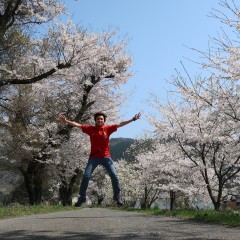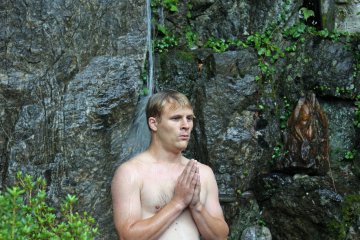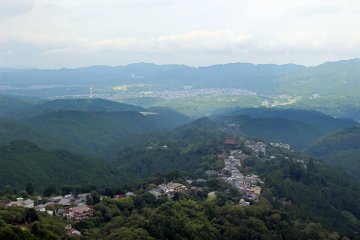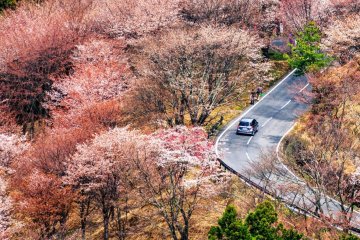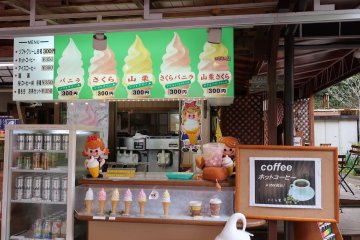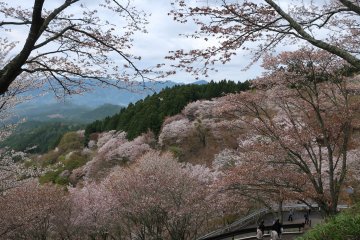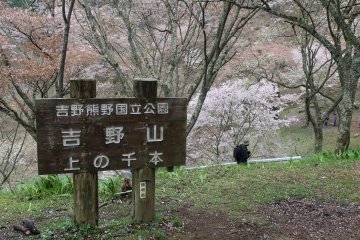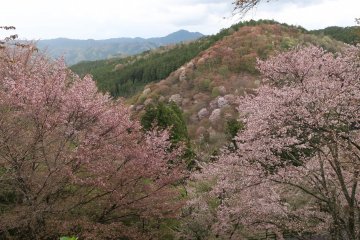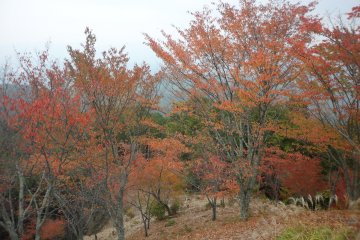A part of the Sacred Sites and Pilgrimage Routes in the Kii Mountains, and designated as part of a UNESCO World Heritage Site, Mount Yoshino is famous for its thousands of sakura or cherry trees. It is one of Japan's most loved cherry blossom viewing areas, with the first cherry trees planted on the mountain more than a thousand years ago.
The mountain is divided into four sections of a thousand trees each, the first being the Shimo Senbon (lower 1000 trees), Naka Senbon (middle 1000 trees), Kami Senbon (upper 1000 trees) and finally the Oku Senbon (inner 1000 trees) at the top of the mountain. At each area, it is said that thousands of cherry trees can be seen at a time, hence its name. Because of the huge range in elevation, the trees bloom at different times, starting with the lowest trees in the end of March, to the highest ones in mid or end of April.
Easily accessible by train from Osaka, Kyoto, or Nara, Yoshino is the final station on the Kintetsu Yoshino line. There is a year round cable car to the Shimo Senbon, where the shopping street, hotels, hot springs and temples are located. During the sakura season, there are also buses making the ascent to the Naka Senbon. From there it is about an hour hike to the Kami Senbon and Oku Senbon, depending on level of fitness. As you hike up, the crowds thin out, which makes taking photos easier. There are many parks along the way, where you can spread out a mat, and enjoy hanami or cherry blossom viewing picnics.
While in town, do try the local speciality, persimmon leaf sushi. In the olden days, salted mackerel and rice balls were wrapped in a persimmon leaf, and then put into a wooden box and pressed with a heavy stone to ferment for a few days. Lately, other varieties such as salmon, eel, shrimp, and red snapper are used as well.
Mount Yoshino is not only beautiful during the cherry blossom season, but also in summer with hydrangea blooms, whilst the autumn leaves are colourful in November as well.


